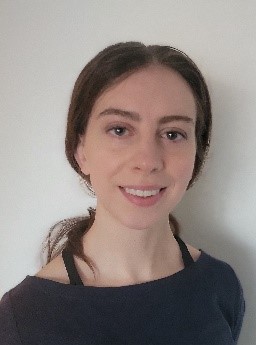ECE Seminar Lecture Series
Engineering on the nanoscale: Layered materials and their impact in opto-electronics
Elyse Barré, PhD, Postdoctoral fellow at the Lawrence Berkeley National Laboratory
Wednesday, December 14, 2022
Noon–1 p.m.
Wegmans Hall 1400
 As we approach the fundamental miniaturization limit of silicon technology, new approaches must be taken to improve the density of memory and computational units. Additionally, we need to develop more efficient integration with optical interconnections which offer higher bandwidths [1]. Layering van der Waals (vdW) materials allows us to build heterogeneous structures into the third dimension with no requirements of lattice matching and without dangling bonds [2]. Transition metal dichalcogenides (TMDCs) are particularly promising for optics and optoelectronics due to their momentum-direct bandgaps and strongly bound excitons [3]. In this talk, I will discuss the optoelectronic properties of TMDCs and how we can take advantage of them.
As we approach the fundamental miniaturization limit of silicon technology, new approaches must be taken to improve the density of memory and computational units. Additionally, we need to develop more efficient integration with optical interconnections which offer higher bandwidths [1]. Layering van der Waals (vdW) materials allows us to build heterogeneous structures into the third dimension with no requirements of lattice matching and without dangling bonds [2]. Transition metal dichalcogenides (TMDCs) are particularly promising for optics and optoelectronics due to their momentum-direct bandgaps and strongly bound excitons [3]. In this talk, I will discuss the optoelectronic properties of TMDCs and how we can take advantage of them.
The first part of the talk will introduce the valley-spin locking properties of monolayer TMDCs and demonstrate the influence of the valley-Hall effect on spin populations [4]. This spin-locking property can be utilized in spintronics and for optical non-reciprocity. The second part of the talk will delve into interlayer excitons (ILXs), electron-hole pairs split across two layers of TMDCs. Depending on the chosen TMDCs, the emission energy of ILXs can be found in the visible to the telecom communication range. ILXs are highly tunable under small electric fields [5]. For optical integration, we need to quantitatively characterize the strength of the light matter interaction of ILXs. We did such optical characterization for the first time ever using electroreflectance [6]. The last part of the talk will explore the moiré pattern emergent in bilayers of TMDCs and how these can confine ILXs for uses in quantum information applications [7].
[1] D. A. B. Miller. Proc. IEEE, 97, 7 (2009)
[2] Geim and Grigorieva, Nature, 499, 419-425 (2013)
[3] T. Mueller and E. Malic, npj 2D Mater. Appl., 2, 29 (2018)
[4] E. Barré, et al. Nano Lett., 19, 2, 2019
[5] O. Karni, E. Barré, et al. PRL, 123, 247402, 2019
[6] E. Barré et al., Science, 376, 6591 (2022)
[7] E. Barré*, O. Karni*, V. Pareek*, J. D. Georgaras*, M. K. L. Man*, C. Sahoo*, et al. Nature, 603, 247–252 (2022).
Bio:
Dr. Elyse Barré is a post-doctoral researcher working in the Molecular Foundry at the Lawrence Berkeley National Laboratory in Berkeley, California. She received her bachelor’s degree in Engineering Physics at Carleton University in 2015. She received her master’s degree and Ph.D. in Electrical Engineering at Stanford University in 2017 and 2022 respectively with support from the Natural Sciences and Engineering Research Council of Canada Postgraduate scholarship and the Oswald Garrison Villard, Jr. Fellowship.
Refreshments will be provided.
